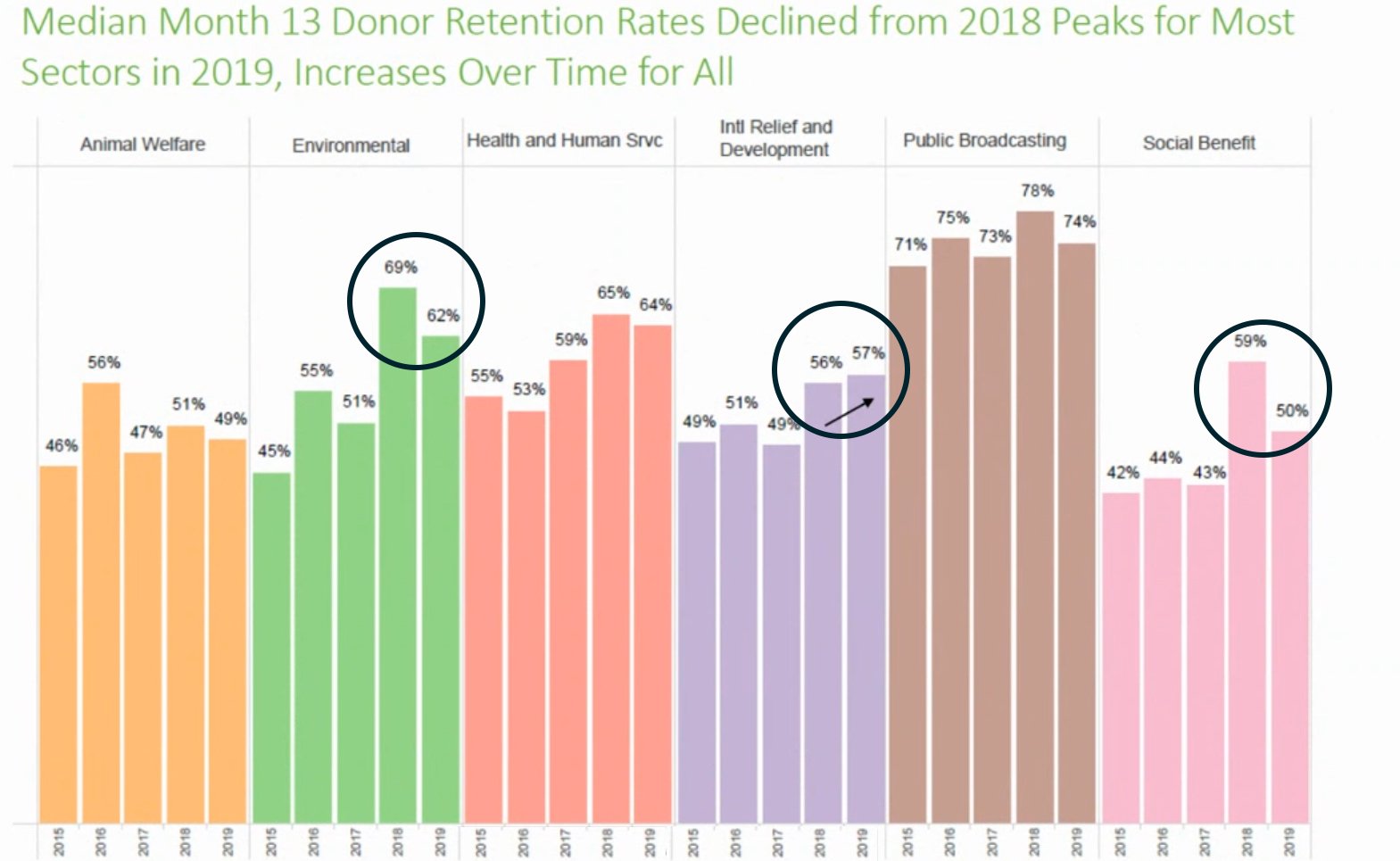
Will Reactionary Sustainer Donors Retain? Here’s What History Tells Us

2020 has brought more challenges (and distractions) than any other year in the recent past. Not all challenges are negative, however. Some organizations are experiencing a positive uptick in new donors to aid their mission, including new sustainer donors. Many of the organizations experiencing this influx in 2020 have never dealt with this “challenge” before.
Hopefully, the recent past can be a great guide for today.
The reality is that many organizations galvanize new sustainer support through seemingly reactionary moments in time. In 2016, the reactionary moment was the Trump election. In 2020, it is COVID-19. Therefore, the 2016/2017 trends may be able to help answer questions such as:
- “Will these donors keep giving once the need caused by the COVID-19 pandemic disappears?”
- “Does the fact they were acquired during a reactionary time mean they’ll be reactionary in their long-term giving? Or will they behave like many emergency donors who give once and disappear?”
- “How do I keep them engaged and make sure my infrastructure and donor marketing plan evolves to incorporate them?”
Here are 3 things we know about sustainer donors who convert during seemingly reactionary moments:
- According to Blackbaud Target Analytics®, in the months following the November 2016 election, sectors that acquired a lot of reactionary donors did not see large-scale attrition. The influx of new sustainers in 2017 resulted in a spike in retention rates in 2018. In 2019, retention rates fell behind 2018 a bit but were still historically high, and in most cases, still significantly higher than 2017 rates.
Blackbaud Target Analytics®
- 60% of new sustainers acquired in the 2017 post-election — read: reactionary donors — were still giving in 2019. Compare that to 20% of single-gift donors acquired during the same 2017 timeframe that were still giving in 2019. (Discover more key findings from the 2020 donorCentrics® Sustainer Summit).
The lesson: Although you may take a small hit in retention rates, reactionary donors are a safer bet than single-gift emergency donors. - Some of your new sustainers may end up being more loyal than those currently on file. For example, the ACLU shared (during the ANA Chicago 2019 Conference) that in the months following the November 2016 election, their sustainer donors acquired had higher 24-month retention rates than those acquired pre-election.
You might ask: “This is encouraging, but what did these nonprofit organizations learn along the way that helped them manage retention and keep donors engaged?”
- EFT & Credit Card Updaters. If you’re not investing in your back-end operations, make this your first priority. The most successful sustainer programs are those who invested in these platforms. They’re essential for retention.
- Start talking about “tomorrow” with sustainers. Translate the immediate short-term need into a long-term vision. Don’t wait for COVID-19 to be cured to start showing them how their commitment helps solve ongoing challenges. Remember, they joined to be part of something bigger, not just to solve a short-term need.
- Pre-sustainer engagements — leverage your database! Those donors who engaged but who have not become sustainers are still good indicators of long-term value, even if they just opened an email! What did they engage with and how can that inform your communication plan?
- Be flexible. Industry intel suggests that donors who give monthly think of their giving with a “budgeting” mindset. Therefore, if they feel they can’t give what they used to, offer options. It’s better to keep them at a lower gift than lose them.
Related Articles
View All
Actionable Fundraising Advice

